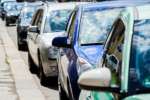Likewise with any episode that can offer ascent to a personal injury case, making sense of who is to blame in a car crash is frequently a matter of concluding who was careless or careless.
Much of the time, sound judgment will reveal to you that a driver, bicyclist, electric bike rider, or passerby acted carelessly, however you may not recognize what laws or decides that individual damaged. Your contention to an insurance company that someone else was to blame for an accident can be reinforced in the event that you locate some “official” support for your decision. Here are various spots to search for such help.
Police Reports
After a car accident, a cop or some other individual from nearby law requirements may go to the scene, especially on the off chance that they realize that somebody was harmed. In the event that an official went to the scene, they presumably made a composed accident report. Solicit the traffic division from your nearby law authorization office on how to get a duplicate.
Now and again a police report clearly expresses an official’s feeling that somebody damaged a particular transit regulation and that the infringement caused the accident. It might even express that the official gave a reference. On different occasions, the report just notices careless driving, without clearly expressing that the infringement caused the accident.
Notwithstanding how explicit it is, any notice in a police report of a transit regulation infringement or careless driving by someone else can fill in as extraordinary help in demonstrating that the other individual was to blame.
State Traffic Laws
Somewhere else to search for help for your contention that the other driver was to blame is in the state laws that administer driving. These guidelines of the street are contained in each state’s resolutions and are generally known as the “Vehicle Code.”
An official, rearranged adaptation of these laws (some of the time called “The Rules of the Road”) is regularly accessible from your state’s division of engine vehicles (frequently on the web, and as a rule at a nearby office). The total vehicle code is likewise typically available on the web, or at numerous open libraries (and all law libraries).
In the list to the vehicle code, search for postings that may apply to your accident. For instance, there might be postings for “speed limits,” “option to proceed,” or “roadway markings.” If you visit a law library, the curator might be happy to assist you with your inquiry, so don’t be reluctant to inquire. On the off chance that you discover a standard that may apply to your accident, duplicate its careful wording as well as the rule number, so you can allude to it precisely when you examine your case with the insurance agent.
Certain Liability
In case you’re engaged with particular sorts of vehicle accidents, the other driver is to blame 99% of the time, and insurance organizations barely trouble to contend about it.
Backside Collisions
On the off chance that somebody hits you from behind, it is for all intents and purposes never your shortcoming, paying little heed to why you halted. A fundamental standard of the street requires a driver to have the option to stop their vehicle securely if traffic is halted ahead. A driver who can’t stop securely isn’t driving as securely as the individual in front.
The other sure-fire some portion of the backside accident guarantee is that the vehicle harm frequently demonstrates how it occurred: If one car’s front end is harmed and the other’s backside is likewise harmed, there can’t be a lot of contention about who struck whom. Obviously, the driver of the car that hit you may have a case against somebody who made you stop out of nowhere, or against a third car that drove his car into yours, however, that doesn’t change their obligation regarding wounds to you and harm to your car.
Remember, in any case, that regardless of whether you have been back finished, in a couple of conditions your own carelessness may decrease your pay under the standard of “near carelessness.” A typical model is a point at which either of your brake or tail lights were out, particularly if the accident occurred around evening time. Another model is in the event that you had mechanical issues yet neglected to do everything you could to move the vehicle off the street.
Left-Turn Accidents
A car making a left turn is quite often at risk for an impact with a car coming straight the other way. Special cases to this close programmed rule are uncommon and hard to demonstrate, however they can happen if:
- The car going straight was working out in a good way over as far as possible.
- The car going straight experienced a red light.
- The left-turning car started its turn when it was protected, however, something sudden made it delayed down or stop. This is an amazingly troublesome special case to utilize in light of the fact that an essential principle of the street says a car making a left turn must hold up until it can securely finish the turn before moving before approaching traffic.
Similarly as with a backside impact, the area of the harm on the cars now and then makes it hard for the driver to contend that the accident occurred here and there other than during a left turn.



